Budget 2021: Funds for anganwadis under ICDS reduced. Only 40% anganwadis in India have tap water connection; lowest in Assam at 2%, Jharkhand 2.5%
Latest data by the Union Jal Shakti Ministry shows that only 39.8% anganwadis are covered with tap water connections. Despite poor infrastructure and lack of basic facilities, such as tap water, the Budget for anganwadis is reduced.

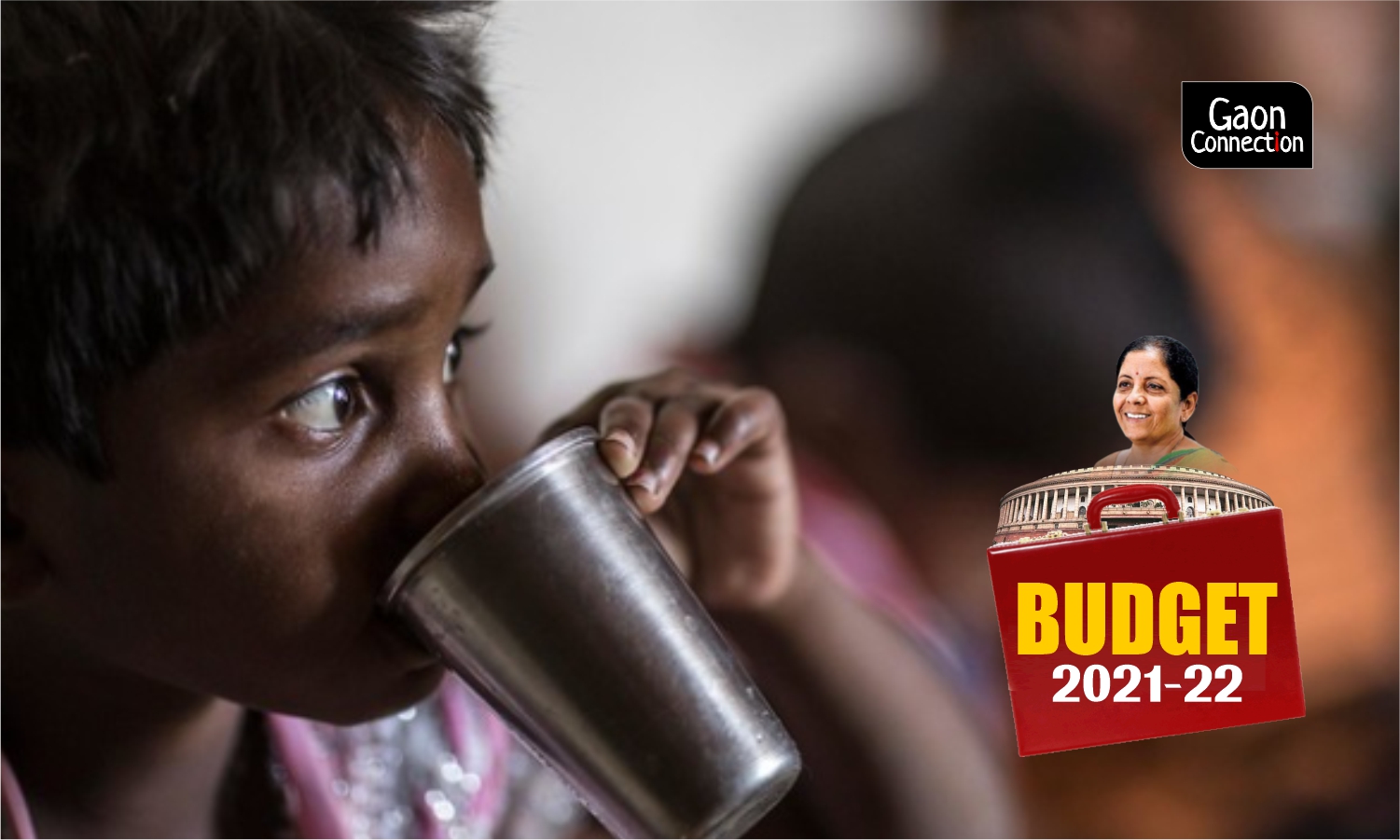
Photo: Unicef India
To provide tap water supply to rural households, including anganwadis and rural schools, the Narendra Modi government launched its flagship scheme of Jal Jeevan Mission in 2019. The aim is to cover all rural households by 2024.
However, latest data by the Union Jal Shakti Ministry shows that as of today, February 6, only 39.8 per cent anganwadis are covered with tap water connections. Of the total 1,158,405 anganwadi centres in the country, functional tap water connections are provided to 461,191 anganwadi centres only.
This is worrisome as in Budget 2021-22, presented recently in Parliament by the finance minister Nirmala Sitharaman, there have been reductions in the funds meant for anganwadis under the Integrated Child Development Services (ICDS).
In India, 158 million kids are registered with the 1.36 million functional anganwadi centres spread across all the districts in the country (as of June 2018).
The Union Budget 2021-22 document shows the combined budget allocated for the Saksham scheme, which includes four programmes: ICDS, Poshan, creches, and scheme for adolescent girls, is Rs 20,105 crores. This is even less than Rs 20,532 crores given to ICDS alone in 2020-21.
The data of the Union Jal Shakti Ministry shows the worst performing states and union territories in terms of tap water connection to anganwadis are Assam (1.84 per cent), Jharkhand (2.51 per cent), Uttar Pradesh (5.08 per cent), Chhattisgarh (5.40 per cent) and West Bengal (5.79 per cent). The coverage in Dadra & Nagar Haveli and Daman & Diu is zero.
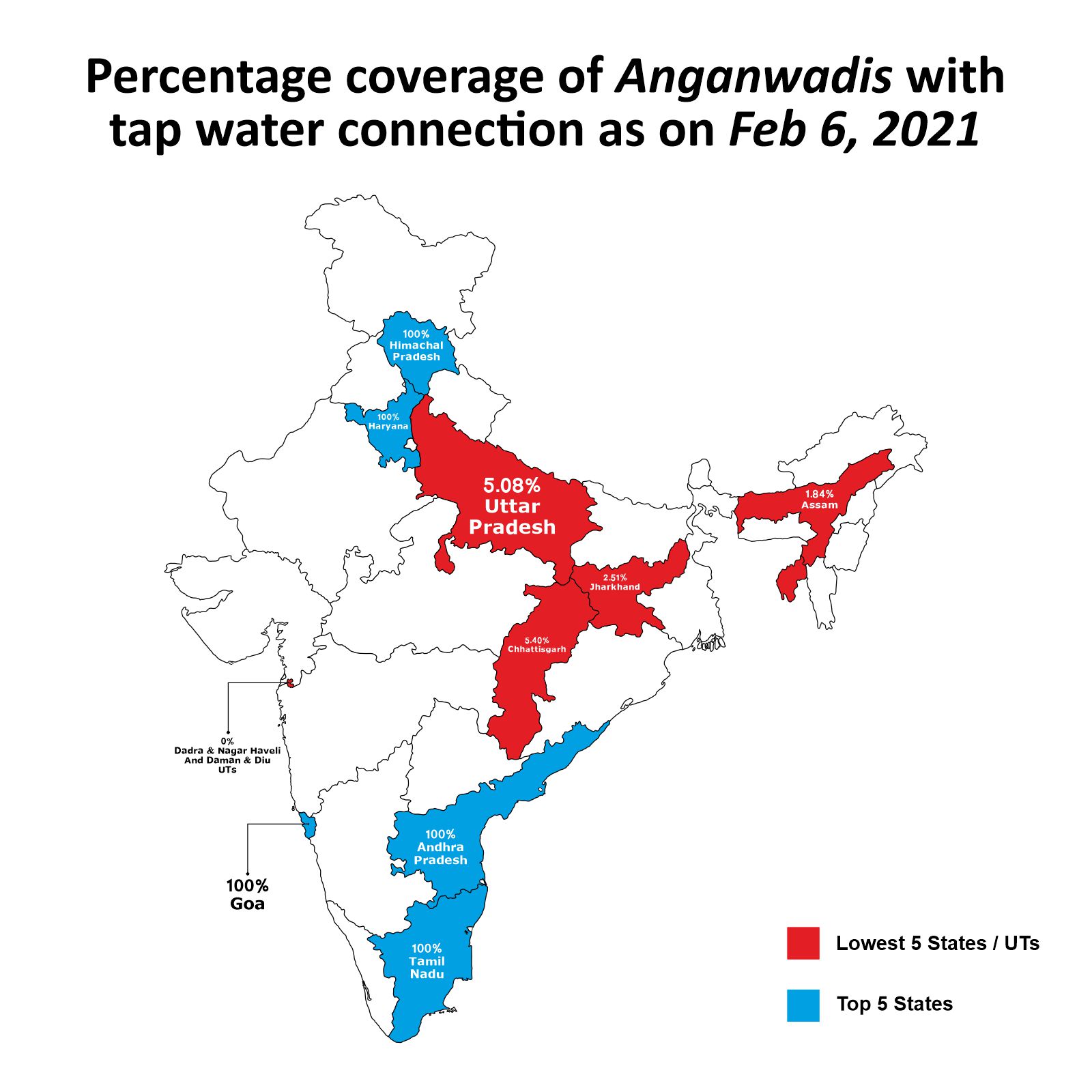
However, there are some states that have achieved 100 per cent coverage of tap water connections to their anganwadi centres. These include Andhra Pradesh, Goa, Haryana, Himachal, Tamil Nadu, and Telangana, which have 100 per cent coverage. Meanwhile, Punjab, Andaman and Nicobar Islands, Jammu & Kashmir, and Gujarat have reported 99.36 per cent, 95.10 per cent, 83.61 per cent, 82.83 per cent of coverage, respectively.
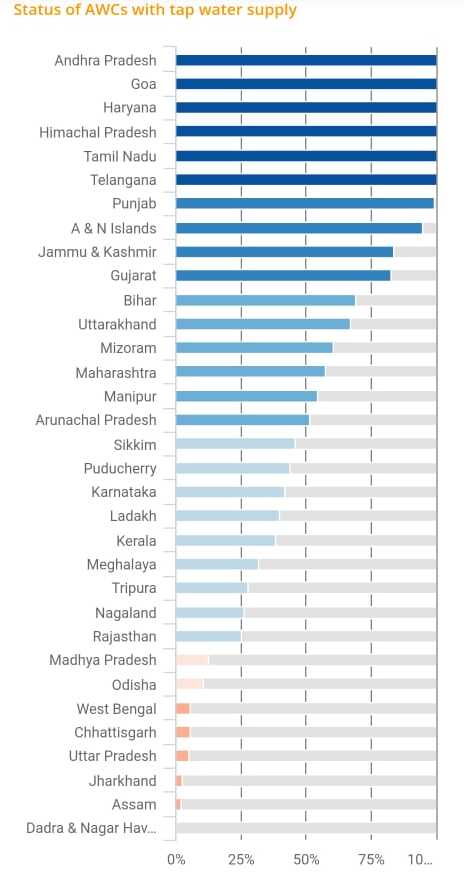
Lack of tap water connection to anganwadis means additional burden on the anganwadi workers and helpers who have to walk long distances to fetch water. Often young kids, under the age of six who come to anganwadi, end up consuming unsafe drinking water.
“The infrastructure of anganwadi centres in our country is really poor. These centres lack even basic facilities, many of them do not have electricity, tap water, and even toilets. With this Budget, the situation for anganwadis would remain concerning,” Chhaya Pachauli, member, Jan Swasthya Abhiyan, Rajasthan, told Gaon Connection.
Take the case of 30-year-old Neelima Mahato who works as an angwanwadi worker in Jharkhand’s Chudinda village of Ghatshila block in East Singhbhum district for the past 12 years. Before the pandemic, when anganwadis were functional, she used to fetch water from a nearby water tank every day to cook meals for 30 kids coming to the anganwadi centre.
The anganwadi centre where Mahto works does not have a tap water connection. She had to make multiple trips daily to the nearby water tank to meet water needs for cooking, cleaning utensils, and also for use in the toilet.
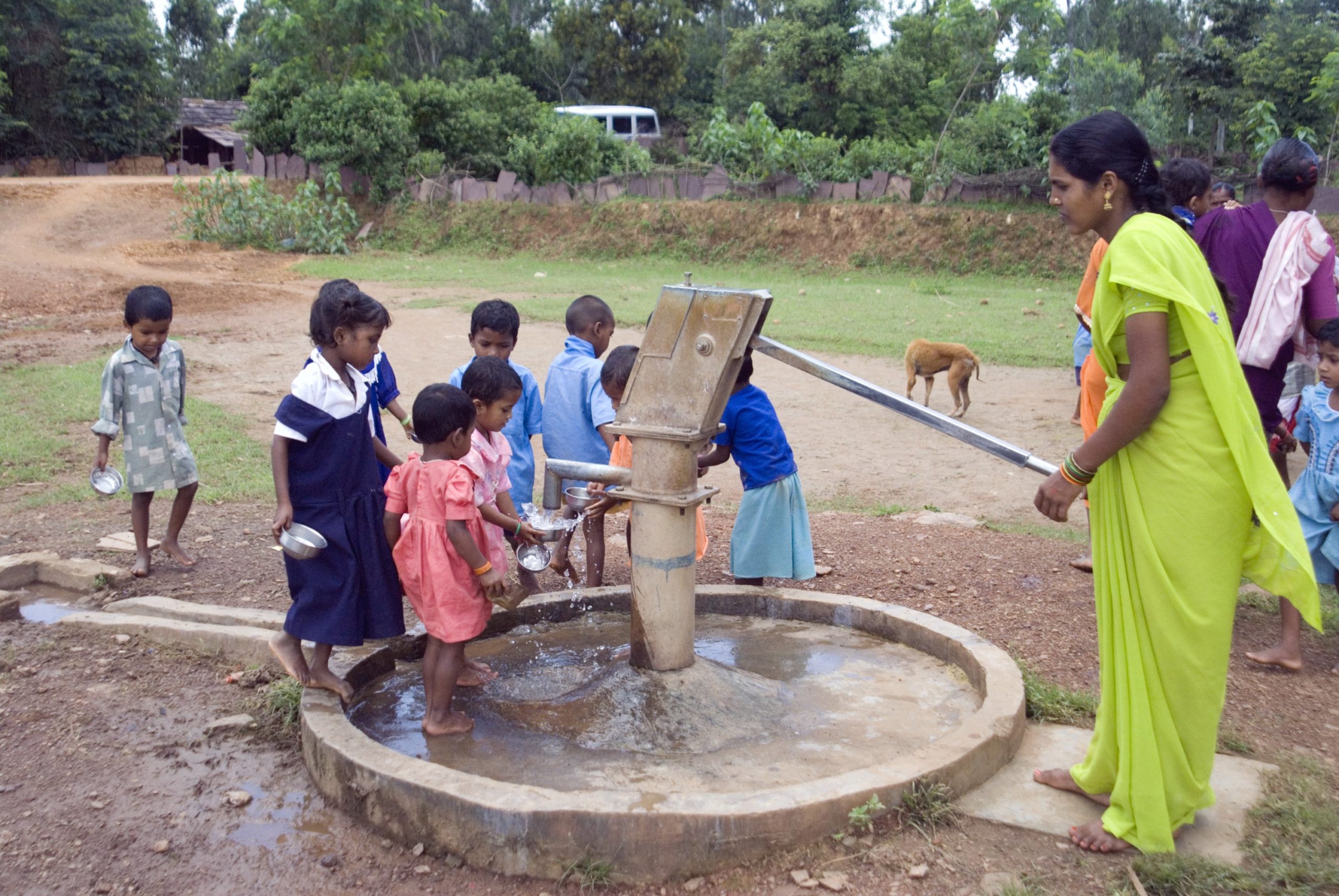
“There is no tap water supply in our centre. My helper and I used to fetch water from a nearby water tank,” Mahto told Gaon Connection. Of the total 38,432 anganwadis in Jharkhand, only 963 or 2.51 per cent have the tap water supply.
Mahto informed Gaon Connection that “there are times, when the tank throws lal pani (contaminated water). We have to fetch water from a hand pump that is around half a kilometre far. We make multiple rounds to fill water buckets.”
Under the Integrated Child Development Services (ICDS) scheme of the Union ministry of women & child development, six services — supplementary nutrition, preschool non-formal education, nutrition and health education, immunisation, health checkup and referral services — are offered as a package through these anganwadi centres. These centres are considered only village level platform for all schemes, interventions, and programmes for women and children.
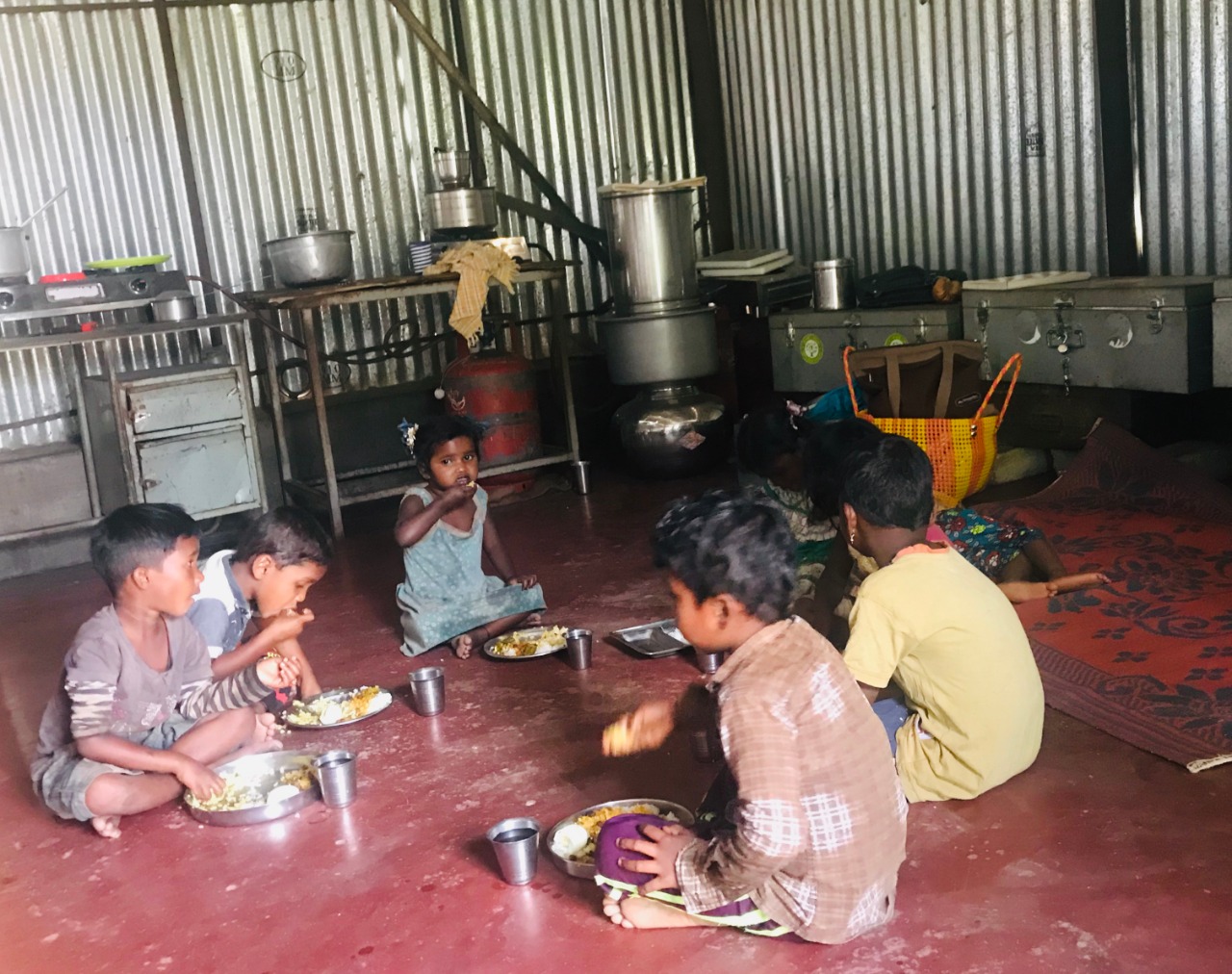
“Apart from hot cooked meals, and eggs and milk provided to the children at the centre, providing safe drinking water to the children is also necessary,” Rakesh Kumar Malviya, member, Vikas Samwad Samiti, a non-profit based in Bhopal, Madhya Pradesh, working for the child rights and malnutrition, told Gaon Connection.
“Poshan is a key component of anganwadis. If you are giving children daliya, and not cooking it in clean drinking water then that is injustice for the entire nutrition system of the anganwadis and the kids,” he added.

As per the Comprehensive National Nutrition Survey report, 2016-18, 35 per cent children in India are stunted, 33 per cent are underweight and 17 per cent are wasted. Malviya suggested to improve nutritional outcomes of these children, the need is to cook hot cooked meals served in anganwadis in clean safe drinking tap water.
Data shows that drinking water sources in more than 53,000 habitations spread across 21 states in India are contaminated with various toxic pollutants, including high levels of cancer-causing arsenic, and fluoride, which deforms bones and cripples people for life. Due to high fluoride content in water, children are unable to walk and have stained teeth.

“Unsafe water puts children at a high risk of diseases, such as diarrhoea and fluorosis. There are many areas in the country where you would find fluoride in water,” said Malviya.
“Almost two years back, we conducted a study in Raisen district. We found as many as two hundred kids in Vighrar village of Silwani tehsil had stained teeth and weak bones,” he added.
According to the report of the World Health Organization, 2019, contaminated water and poor sanitation are linked to transmission of diseases such as cholera, diarrhoea, dysentery, hepatitis A, typhoid, and polio. Of India’s more than 2.3 million annual deaths among children, about 0.3 million (334,000) are attributable to diarrhoeal diseases, reports WHO.

